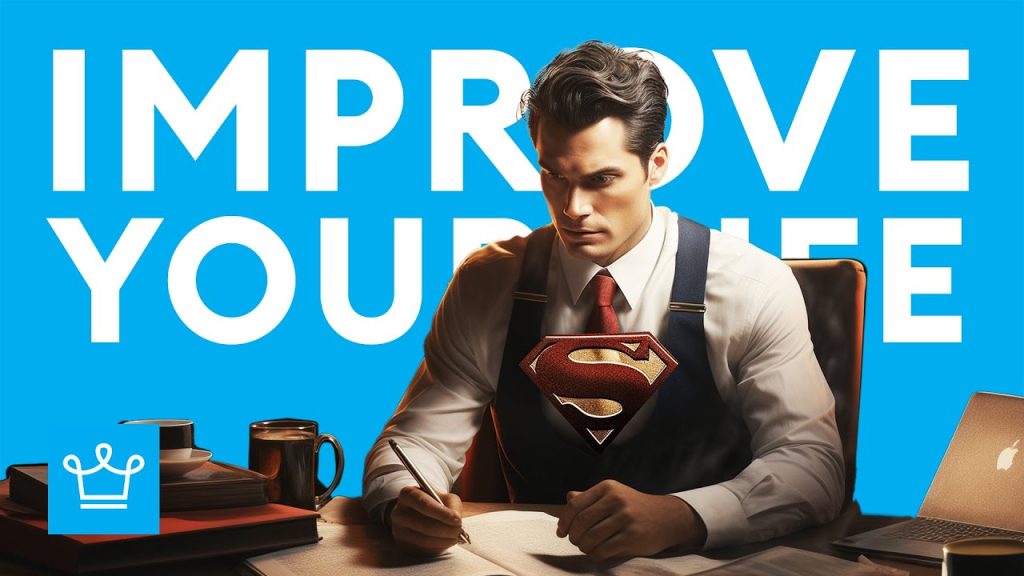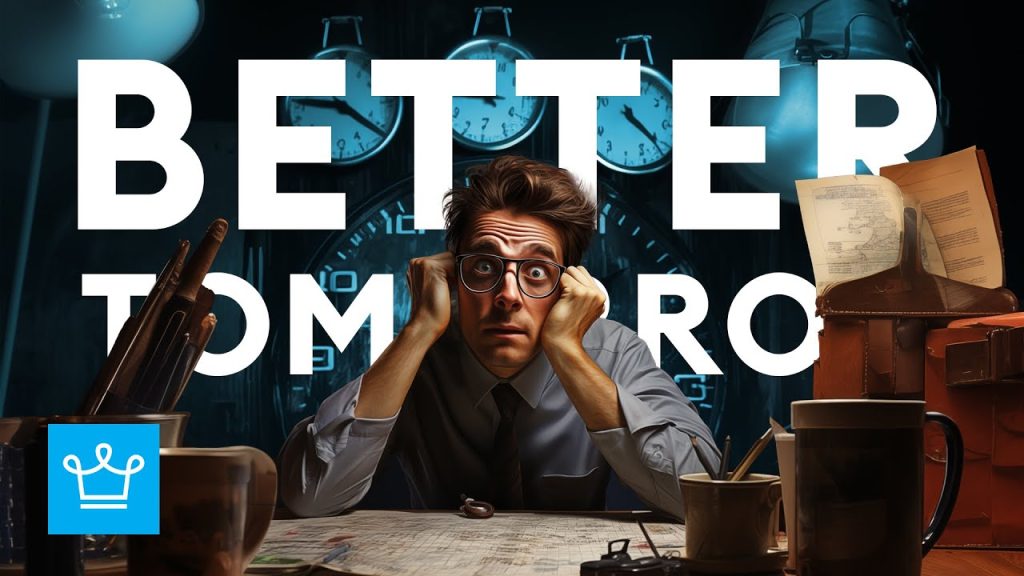If Someone’s Selling Ice to Eskimos, It’s the Luxury Brands. Here Are 15 Great Lessons in Marketing to Learn From Them.
We all have our favorite luxury brands and we’re going to learn a few things form them today. Brands that tug at our heart strings when we see them in store windows, as we slow our pace down to absorb the beauty of the products on display.
But it’s more than just the beautiful display, isn’t it? Everything about that luxury brand oozes opulence, wealth, knowledge, and power. A sense of superiority and quality that you just can’t get from your ordinary day-to-day brands.
Today we’ll find out what it is about luxury brands that we can learn from.
Welcome to Alux.com – the place where future billionaires come to get inspired. If you’re not subscribed yet, you’re missing out.
If you retain more information through a visual session, here’s a video version of this article:
With that out of the way, let’s dive straight into the first item on today’s list.
1
Luxury Brands Command a Premier Price
It’s no secret that luxury brands are very expensive but it doesn’t mean that a luxury brand can just slap on an exorbitant price tag and expect people to buy it just because it’s Louis Vuitton or Vacheron Constantin. It runs far deeper than that.
The pricing of luxury items is supported by several key elements. Brand positioning is of utmost importance, and that means a flawless brand strategy is put in place. Luxury brands spare no expense in this department. They come up with a strategy that sets them apart from their competitors.
If a luxury brand is similar to a non-luxury brand, then the consumer will pick price over name.
Let’s use the Hermès Birkin bag as an example. What makes this bag the most expensive and coveted in the world? What sets it apart? Every single bag is handmade by an artisan. Every bag is unique, not even the stitches are the same. You’re walking around with a piece of artwork on your arm. The most expensive bag ever sold cost the purchaser $500,000!
2
Scarcity Drives Demand
Luxury brands have often come under fire for the mass burning of their excess clothing. Burberry made headlines for burning up to $40 million worth of clothing to protect the luxury brand of the items.
Chanel, Louis Vuitton, Cartier and Montblanc even Nike and H&M – have all burnt surplus stock.
Luxury brands do this to protect their intellectual property and to ensure no illegal counterfeiting takes place. Plus, there would not be such a strong desire to purchase the luxury brands if anyone and everyone could afford it – it wouldn’t be a luxury brand anymore, would it?
Another reason why it’s not a good idea to discount luxury products, is that people will doubt the high mark-up on the products and question whether they were being taken for a ride. It also makes the consumer believe the luxury brand doesn’t believe in their product.
What they will often do to move stock is to add more value to the purchase. So, if you purchase a Louis Vuitton suit, you’ll receive a little something extra.
3
The Brand Has a History That Clients and Staff Are Passionate About
We all love a good story, and luxury brands know how to tell theirs. Historians have learned and suggested that branding was around during the Roman times but owning luxury items was frowned upon. Same for the Greeks and even during the Middle Ages, it was considered “bad form.”
You could go back further in time to when prehistoric cattle rearers would brand their cattle… but that’s a story for another day.
Each luxury brand tells a story. Giorgio Armani started off as a window dresser, it was a dream of Rolex founder, Hans Wilsdorf, to have people wear a watch around their wrist, and Mario Prada and his brother began by selling animal goods in a leather shop.
Clients and staff are passionate about their favourite brands story. It’s inspiring, motivational and an important part of history.
4
Customer Service Is Key
Consumer expectations are on the rise daily, and what sets a luxury brand apart is their detail to customer service. It’s not just a quick in and out for the consumer, but an entire experience.
Luxury brands have stores that draw you in. The way the clothing is displayed appeals to the discerning buyer. There is a focus on pre-purchase encounters, creating a desire before the decision to purchase has been made.
Once inside, personal service is at its best. Lasting impressions are made, and brand loyalty is strengthened. Yet, the experience doesn’t end there. They extend their services to include after-sales, which once again reinforces their commitment to their customer.
Like Hubert de Givenchy once said, “Luxury is in each detail.”
5
Luxury Brands Practice Experiential Retailing
There is a major shift in how brands are marketing their products. Instead of purchasing to prove, “what I have,” people are buying to show, “Who I am.”
So when consumers are purchasing, it’s not just about the item they’re buying, it’s about the whole experience.
What music is being played?
What lighting is being used?
How does the place smell?
All of these play a huge role in the experiential experience the consumer has inside a luxury brand store.
These experiences are only accessible to the rich. Here are the
6
A Luxury Brand Has Total Confidence in Their Product
If you take a walk-through Madison Avenue in New York City and you soak in all the stunning window displays, you will notice that the luxury brands set themselves apart from each other – there’s something to learn here.
While it’s good to know what the competitor is up to, it’s certainly not good to copy them! Luxury brands have a base, signature look or style, which is the benchmark for every creation going forward.
It’s how we recognize when someone is wearing Burberry or Fendi or carrying a Coach or Prada handbag.
Luxury brands have the confidence to remain the same yet change. One of the ways they do this, is through technology which we’ll delve into next.
7
Luxury Brands Embrace Technology
One of the ways that luxury brands stay on point is they embrace technology. They’re using it to their advantage by driving sales online, increasing traffic and maintaining customer loyalty.
And the online experience is a close second to the in-store experience, where your browsing needs are met with class, style and confidence especially since the onset of the pandemic.
Other ways in which luxury brands are welcoming technology into their retail space, is in-store WiFi. Take the Prada Group for example. They put WiFi into more than 500 stores world-wide and used it to enhance their consumers in-store experience.
The network was able to identify repeat clients, and notify the store staff thereof, so they could make that client feel extra-special. The data they collected also helped them identify how long each customer stayed in the store, how many customers they had each day, what their peak times were and what drew the customers attention first.
This kind of data helped boost sales, staff could make better informed decisions and each customer’s experience could be tailor-made to suit them.
8
Social Media Accounts Are Kept up to Date
Aluxers, there’s nothing more frustrating then heading onto a business social media account and the last time it was updated was mid-2015 with some sh*tty meme saying, “Hello from the other side, you’re going to hear my song a thousand times.”
Compare that to Louis Vuitton who post every day, Prada – 3 times a day and Cartier every day.
By staying on top of their social media presence, there is a constant reminder that they’re there, they’re reliable, they won’t let you down… just like their superior quality products won’t let you down.
9
Luxury Brands Manage to Strike a Balance Between Classic and Trending
Karl Lagerfeld once said, “Trendy is the last stage before tacky.” Luxury brands manage to strike the perfect balance between what’s trending yet still keep things classic.
And it’s impressive how luxury brands continue to learn exponentially, yet their products still remain exclusive, rare and often unobtainable.
We mentioned earlier that instead of purchasing to prove, “what I have,” people are buying to show, “Who I am.” So, many luxury brands are shifting their focus to make more sustainable choices in fashion. A trend we hope will continue and grow is the use of more eco-conscious materials, like organic cottons, vegan leather, hemp, and bamboo fibres.
Affluent customers want to make responsible choices when it comes to the consumption of luxury products, and luxury brands are delivering.
Speaking of ecology, here’s an intriguing list of 10 Eco-Friendly Luxury Fashion Brands from our old archives.
10
There Are Subtle Differences in Their Narrative
When it comes to luxury brands, they know what language to use to get the right clientele purchasing their goods.
Words like “timeless,” “luxury”, “powerful,” “discerning,” and “prestige” are used to lure the customer in. And speaking of customers, luxury brands don’t have customers – they have clients. They don’t have salespeople, they have “lifestyle managers.” These lifestyle managers don’t just try and make a sale, their job is so much more than that. They’re there to curate a tailormade experience for their clients.
Luxury brands don’t try and bombard you with dozens of items they want you to buy, they focus on one thing at a time and really convince you that it’s the item you desire and need. Which brings us to our next point.
11
Less Is More
This is true for every part of a luxury brand. When we compare the advertising of a luxury brand product to that of a non-luxury item, you’ll notice the ad campaign for the luxury product is clean, simple, and draws attention to the beauty of that one product.
Compare that to a non-luxury brand that will often have a busy advert, giving too much information and its sensory overload for the customer.
Same applies for their stores. Luxury brands opt for simplicity. You won’t find hordes of coat hangers crammed with clothing, overflowing bins of buy 2 get 1 free, discarded shopping carts, incorrect shoe sizes in the shoe boxes, or have someone bumping you every time you turn a corner.
12
The Packaging Is Just as Beautiful as the Product
Steve Jobs once said, “Packaging can be theatre, it can create a story.” There’s something to learn from this as all luxury brands are in sync with this advice.
And when it comes to packaging, luxury brands are on top of their game. The thrill of watching the sales advisor lovingly place your purchased item into the packaging, and walking proudly away with it is a surreal feeling.
The texture, smell, and look are a promise of great things to come. And when you’re home and you’re opening it up, you’re careful not to tear anything and you keep that packaging for as long as you keep your luxury product. The product and packaging go hand in hand.
13
Luxury Products Give Clients a Purpose
A lot of research has gone into sussing out the client of luxurious goods, and the consensus is much the same… purchasing luxury goods is an emotional decision. Clients feel like they’re part of something more when they buy a luxury product.
The purchase of a luxury item boosts a client’s self-esteem, gives them a sense of belonging, a sense of accomplishment to afford something that most people are unable to. Clients want authenticity, which is why they’d rather skimp in other areas of their life and buy an original Rolex – despite knockoffs looking exactly the same.
For an in depth look at why buying fake is not a great idea, be sure to watch our video, “15 reasons to never buy a counterfeit and fake product.”
14
Buying a Luxury Brand Is an Investment
In 2016, reports suggested that investing in a luxury handbag was a better investment than gold. But like any investments, there are always risks involved.
Aluxers, if you’re keen to purchase a luxury product as an investment – do thorough research on the product first. Make sure it aligns with your values and that you know exactly how it was made and where the materials are sourced from.
Make sure you’re buying it from a reputable source or straight from the store. Check the paperwork is legit and up to date.
If you do all the above, you will have a solid little investment on your hands.
15
Reasons Why High-End Clients Buy Luxury Products
The 2017 Deloitte survey for global powers of luxury goods asked over 1,000 high-end consumers their exact reasons for purchasing luxury goods, and the results were as follows:
- 88% bought luxury products because they were premium quality
- 82% said it made them feel happy and confident
- 75% said they only bought hand-made luxury products
- 68% wanted to buy the latest trends
- 63% bought luxury products to own unique items that others didn’t know about
- 60% said they bought luxury items impulsively
- 57% confirmed they only wear luxury items
- 56% bought luxury items to show off
Armed with that information, regular retailers can easily learn a thing or two from luxury brands.
Like we quoted from Carolina Herrera, on our website, alux.com – in the article, “10 Luxury Quotes For Ultimate Happiness In Life” Luxury will always be around, no matter what happens in the world.”
Question:
Aluxers, what is one luxury item that you’ve always wanted to purchase? Share your thoughts with us in the comments.






